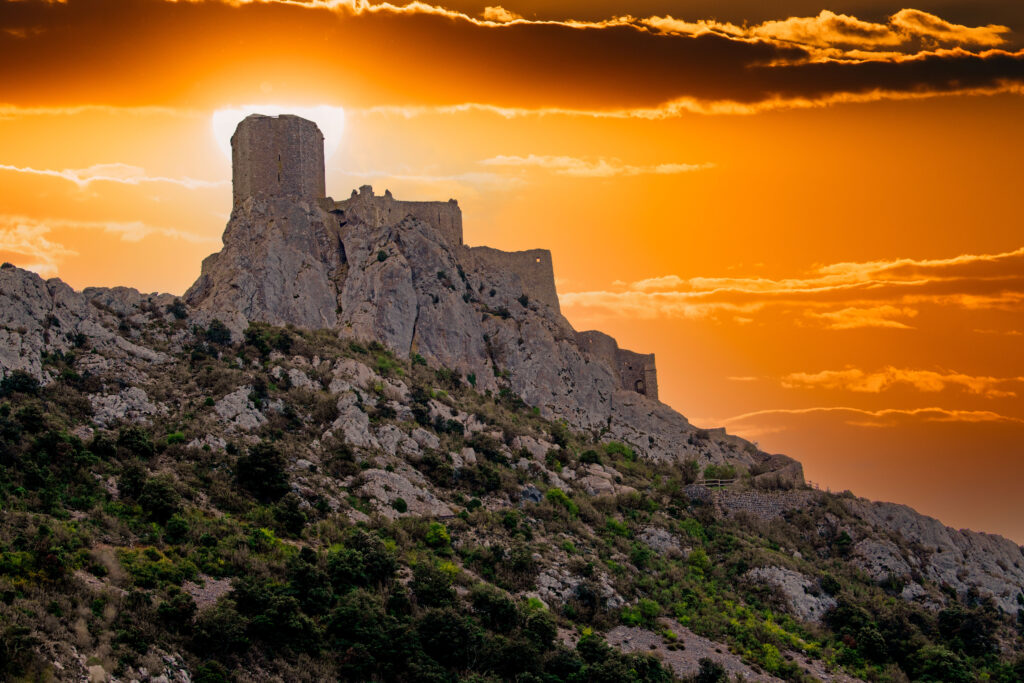
Welcome to Occitanie, a land of legends and mysteries, where Cathar castles have stood proudly on hills and mountains for centuries. Le Petit Futé invites you to discover these architectural treasures, witnesses to the region's turbulent history. From Montségur to Peyrepertuse, via Quéribus and Puivert, these medieval fortresses will plunge you into the heart of the Cathar epic, which forever marked the cultural identity of Occitanie. Ready to step back in time? Follow us on this exciting adventure to discover the 15 most beautiful Cathar castles to visit in Occitanie!
1. Château de Peyrepertuse
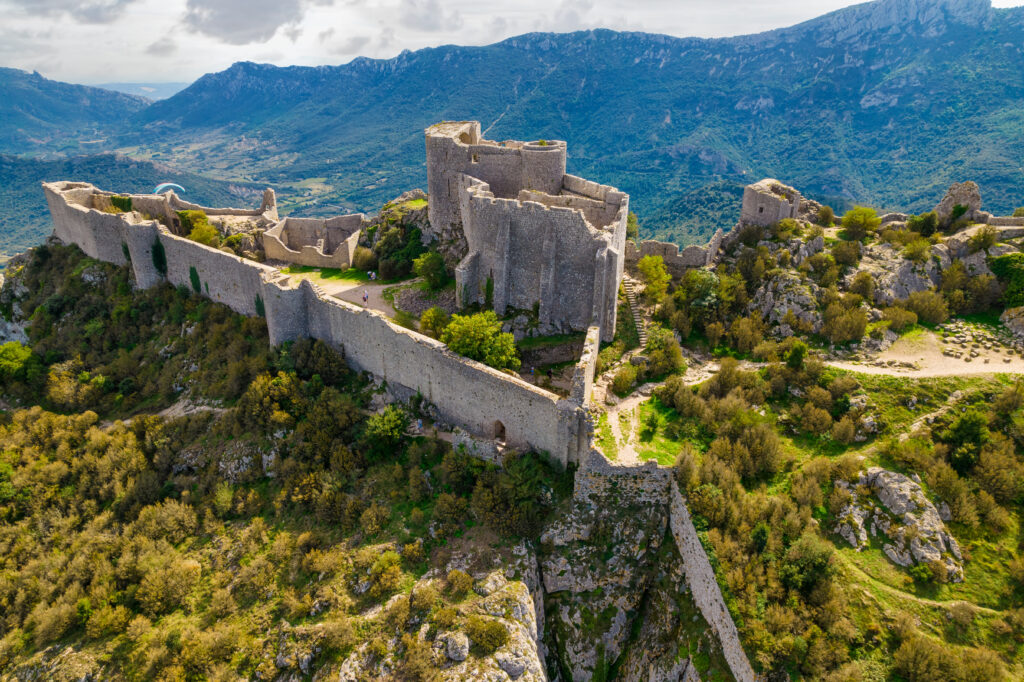
This is one of the most beautiful places to visit in the Aude region: with its 1.2 km of ramparts, it's the most extensive of the "sons of Carcassonne" castles. Château de Peyrepertuse is a veritable jewel of medieval military architecture, comprising four sections: the lower enclosure, the old keep, the middle enclosure and the Saint-Jordi keep. To reach the fortress, which stands 800 metres above sea level, you have to take a steep path winding through scrubland and rocky outcrops. But the effort is well worth it: once at the top, visitors are rewarded with a breathtaking view of the surrounding mountains, the Mediterranean in the distance, the Corbières to the north, the Fenouillèdes to the south and all the way to the sea.
2. Château de Montségur one of the finest Cathar castles to visit in Occitania
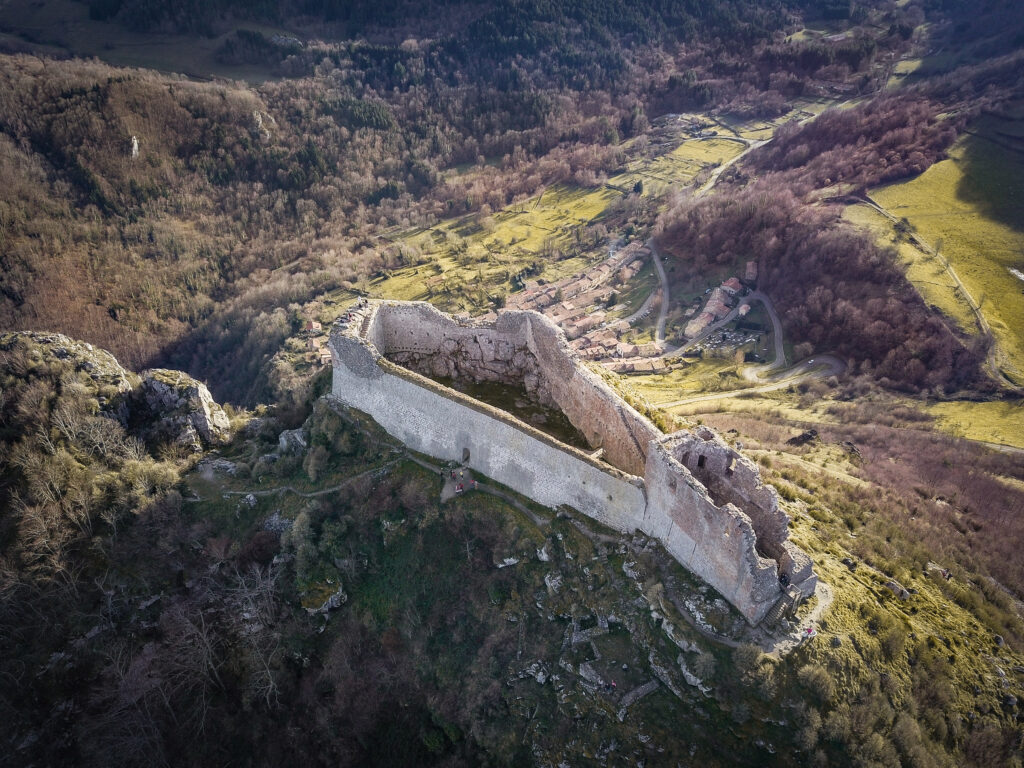
Perched on a rocky peak more than 1,200 meters above sea level, the Château de Montségur is an emblematic site of Cathar history, offering a breathtaking view of the Ariège Pyrenees. It was here that the final siege of the crusade against the Cathars took place in 1244, bringing down the last stronghold of this religious community. The castle ruins, which have been partially restored, bear witness to the strategic importance of this fortress, which played a key role in the Cathar resistance. The "chemin de ronde", which offers a panoramic view of the surrounding mountains, is a popular place for visitors to stroll. Also worth a visit is the historical and archaeological museum, where you can discover what life was like for the inhabitants of this must-see castle during your stay in Occitanie.
3. Château de Lordat
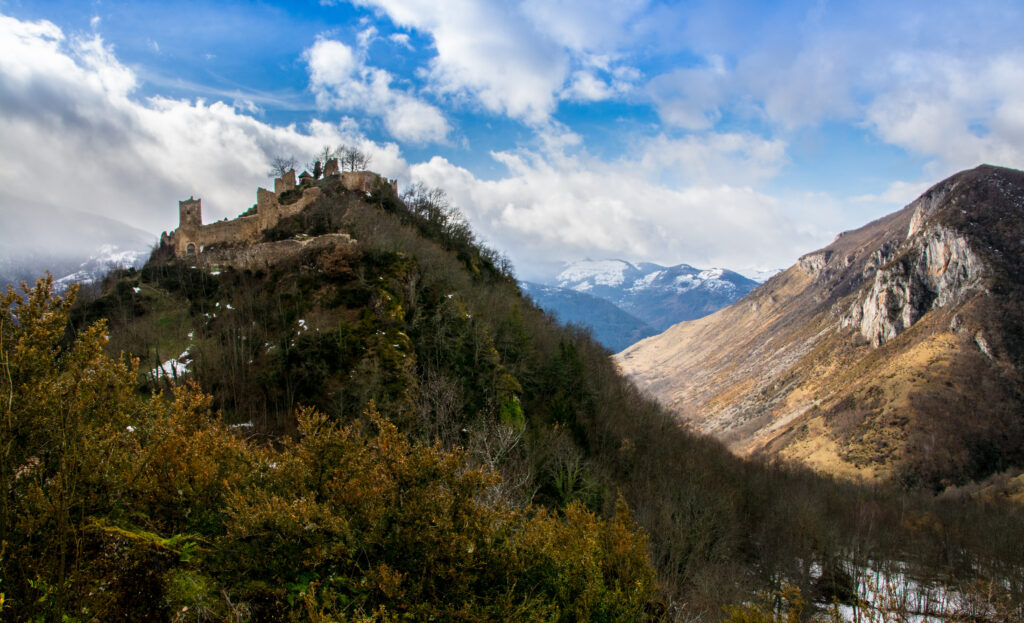
From the top of its rocky spur, the Château de Lordat offers a breathtaking view over the Ariège valley. Built in the 11th century, Lordat castle was the scene of many historic events, notably during the crusade against the Cathars. It served as a refuge for Cathars fleeing Montségur. Château de Lordat is also famous for its Romanesque chapel, which houses exceptionally well-preserved 12th-century frescoes. Today, the château is privately owned, but is open to the public for guided tours to discover its fascinating history, from its construction to its restoration in the 19th century.
4. Château de Quéribus
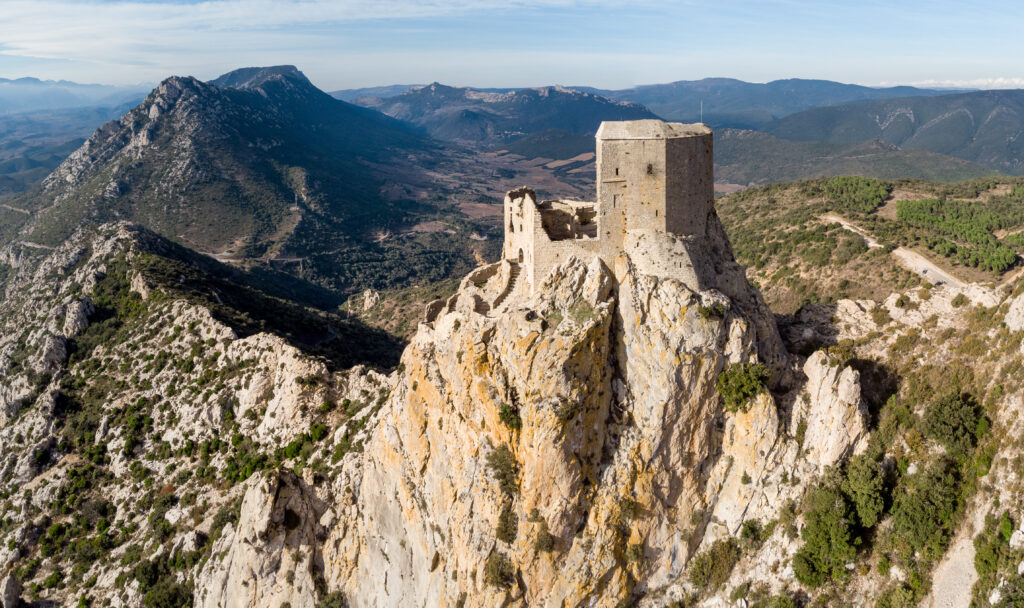
Built in the 11th century on a rocky outcrop over 700 meters above sea level, the Château de Quéribus has been the scene of many historic events, including the crusade against the Cathars. Visitors can explore the vaulted rooms, watchtowers, ramparts and curtain walls, all of which bear witness to the strategic importance of this fortress. The ascent to the castle takes you along a pathway with explanatory panels revealing details of medieval daily life. The dungeon terrace (728 m) is a rewarding reward, with views of the Corbières, the Pyrenees and the Mediterranean.
5. Château de Saissac, one of the finest Cathar castles to visit in Occitanie
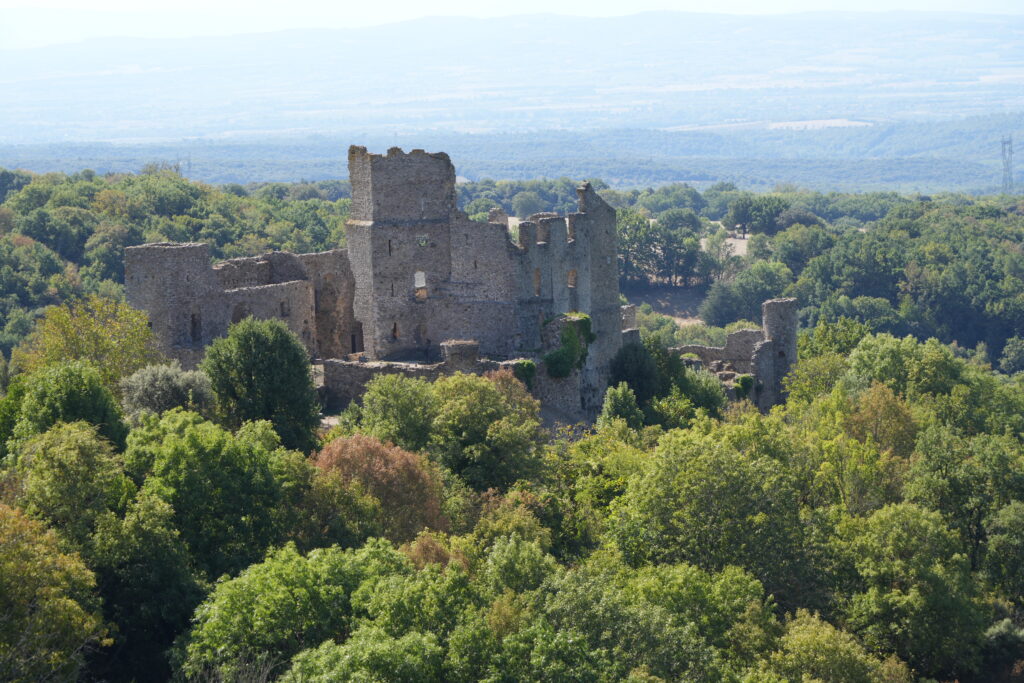
Château de Saissac is the oldest and one of the largest castles in Cathar country. In fact, excavations have shown that it dates back to the year 900. Visible from the road, the castle can be visited and experienced on a daily basis. 2,000 royal denarii found in 1979 and stamped with the seal of Saint Louis add to the site's museographical and historical interest, making it a veritable treasure trove, both literally and figuratively. Château de Saissac also boasts breathtaking views of the Montagne Noire and the surrounding area, making it an ideal place for visitors to take a stroll.
6. The Royal Fortress of Najac
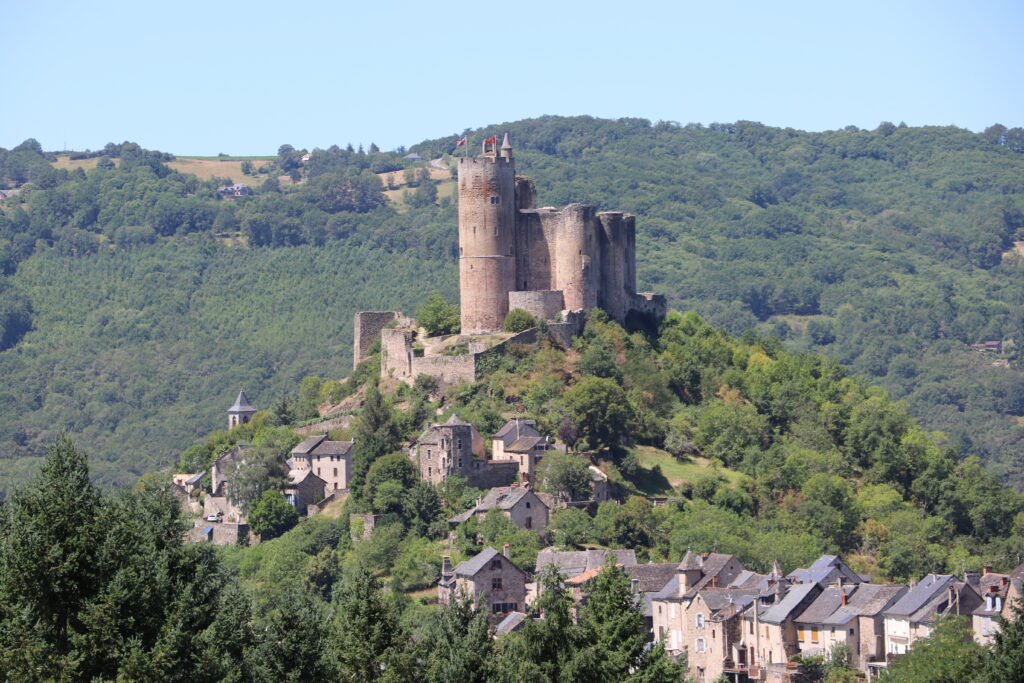
Commissioned in 1253 by Alphonse de Poitiers, brother of Saint Louis, the Fortress of Najac played an active role in the battles against the Cathars and the Hundred Years' War, and its dungeon also served as a prison for the last Templars in Rouergue. It is a remarkable testimony to the defensive military architecture of the Middle Ages. The dungeon features 6.80 m archways, the only ones of their kind in the world. The Gothic chapel, adorned with numerous companion marks, conceals a secret passage leading to the last refuge of the Governors, before accessing a grandiose panorama of the city of Najac.
7. Château de Termes
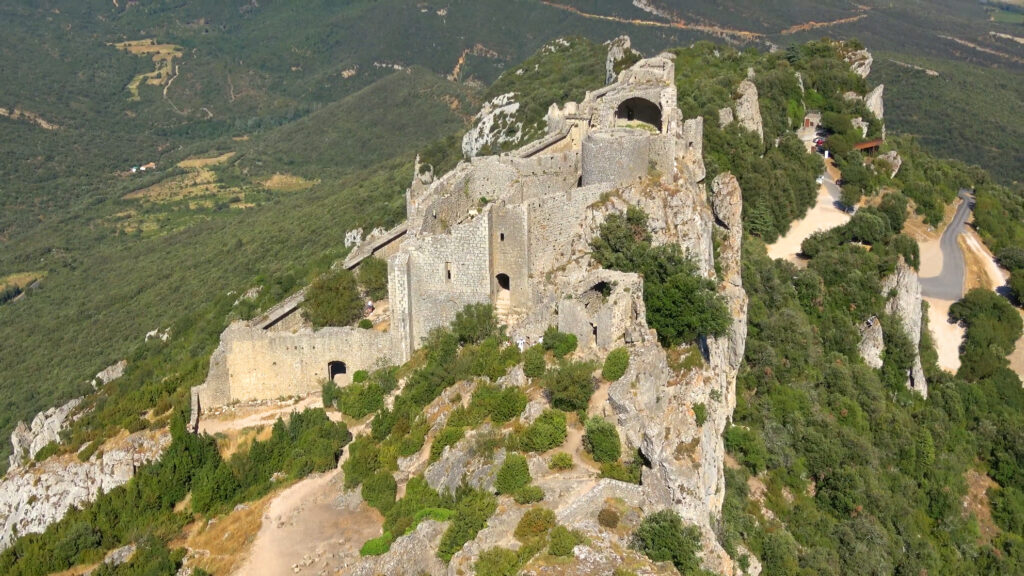
Situated in the heart of the countryside, just an hour from Carcassonne, Château de Termes is a medieval castle whose remains are still being excavated and consolidated. Termes is an important witness to the region's turbulent history, having been the scene of the 1210 siege led by Simon de Montfort and the crusaders during the Crusade against the Albigensians. The lower enclosure is the best preserved: the curtain walls have retained their full elevation. The second enclosure contains the scattered remains of the destroyed keep, and the chapel. As you enter, you'll discover two Romanesque openings, one of which is cruciform, the castle's emblem. The tour begins with a 12-minute film giving an overview of the castle's history.
8. Château d'Aguilar, one of the finest Cathar castles to visit in Occitanie
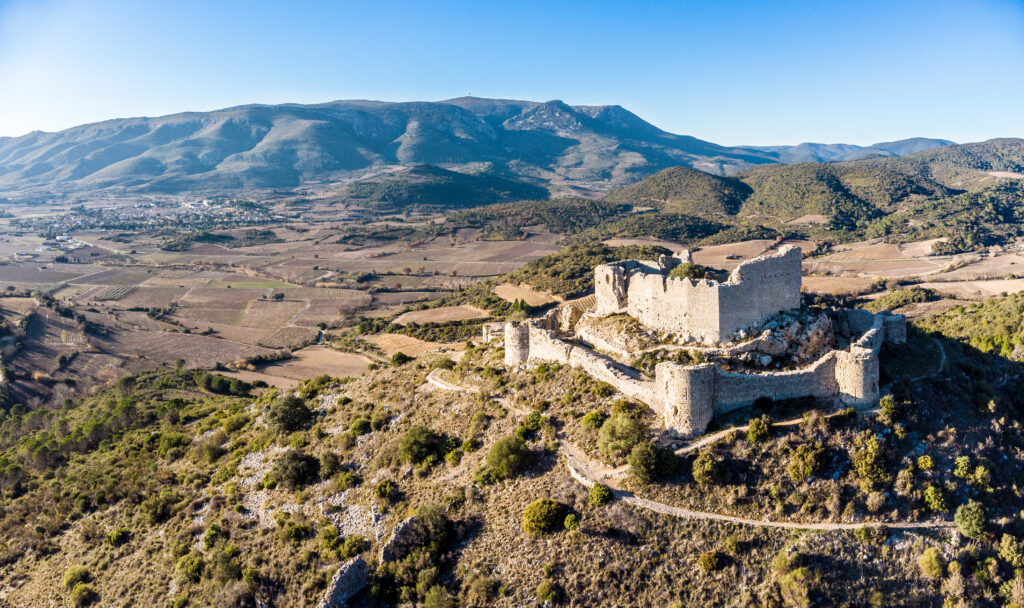
It's in this beautiful Cathar region that the Château d'Aguilar stands, with written records dating back to 1020 under the name "Puig Agilar". Overlooking the Tuchan plain from its 321-metre-high hilltop, it controlled access to the Corbières and kept watch over the Tauch plain, on the border with Roussillon. After the loss of Château de Termes in 1228, it became the seat of seigniorial power for Olivier de Termes. But like the citadels of Quéribus and Peyrepertuse, Château d'Aguilar lost its strategic importance after the signing of the Treaty of the Pyrenees.
9. Château de Puilaurens
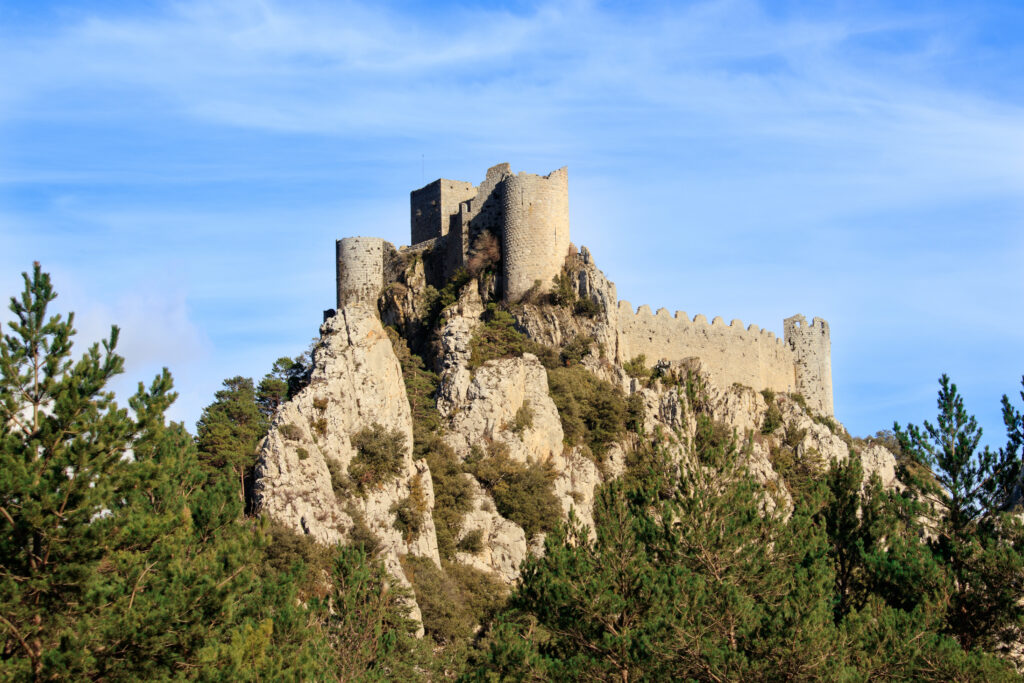
Perched on a rocky ridge 697 m above sea level, Puilaurens castle is first mentioned in 985, but most of the fortifications still visible were built between the 12th and 13th centuries. The walls, barbican and machicolations, towers, residential buildings and cisterns bear witness to Puilaurens' essential defensive role. Along with Peyrepertuse, Quéribus, Aguilar and Termes, Puilaurens protected the frontier, and these five fortresses are also known as the "Five Sons of Carcassonne" because of their strategic position. Puilaurens is the best-preserved citadel in the Aude region, and is also home to the legend of its "White Lady".
10. Château de Puivert, one of the most beautiful Cathar castles to visit in Occitanie
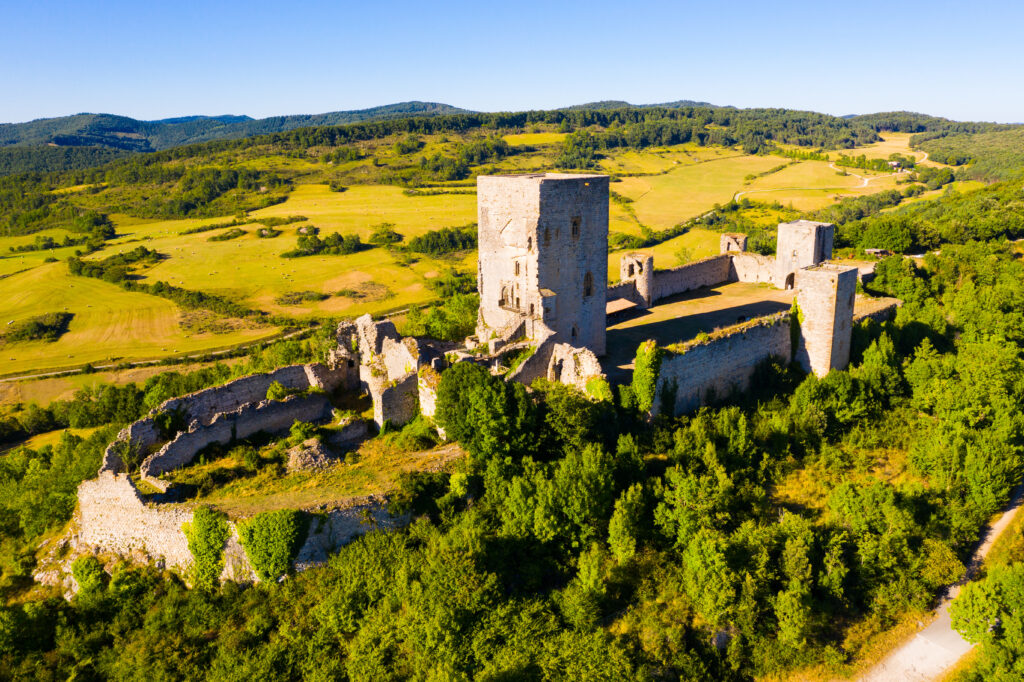
Château de Puivert is one of the Cathar castles in the Aude hinterland, classified as a historic monument since 1907. Although privately owned, it is possible to visit the remains of the ancient 12th-century castle, as well as the 14th-century château, one of the best preserved in the region. Access to the castle is via a square gate tower, originally equipped with eight flanking towers, five of which are still in very good condition today. The keep, which originally adjoined the lord's dwelling, has four magnificent vaulted rooms and has retained its full height of 35 meters. The interior is virtually untouched , with four floors, including the chapel and the musicians' reception room.
Château de Puivert is also famous for its bailey, reminiscent of the tournaments and jousts so dear to knights. It has been the setting for films such as "The Ninth Gate" starring Johnny Depp.
11. The castles of Lastours
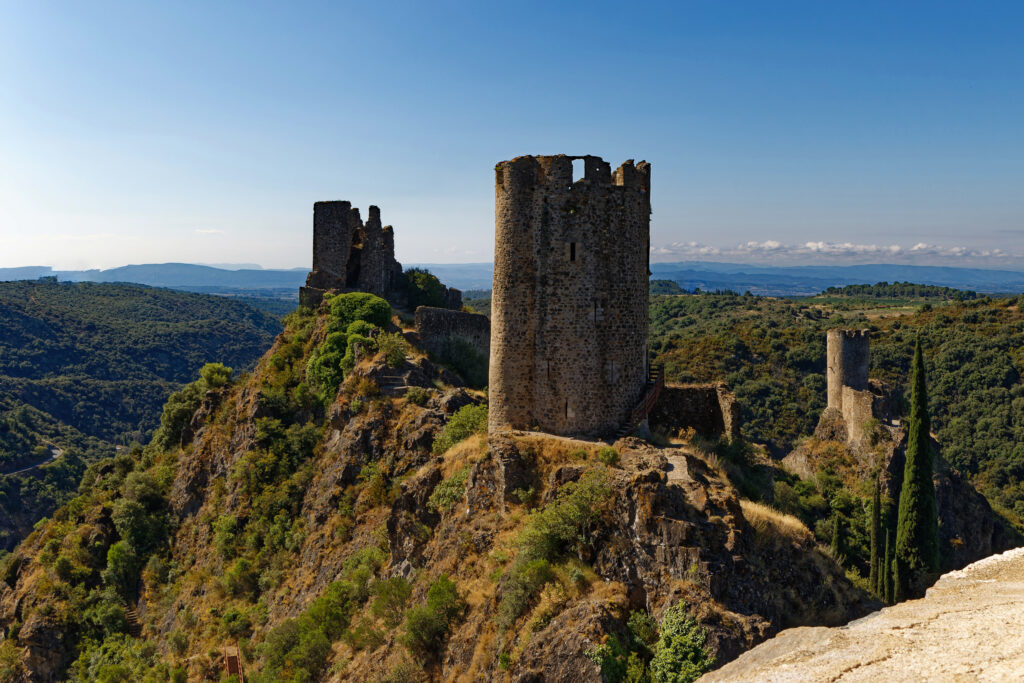
A breathtaking view, a rocky landscape and castles perched 300 meters high on a ridge overlooking the valley... The castles of Lastours were the first listed site in the département in 1905. Located between the Orbiel river and the Grézilhou torrent, the site withstood multiple assaults during the Crusade against the Albigensians and the Wars of Religion. The castles consist of four towers: Cabaret, Surdespine, Quertinheux and Tour Régine. Access to the castles is a little tricky, but a stop at the shaded belvedere allows you to admire two exceptional views of the site without having to do the whole walk.
The castral village of Cabaret is also worth a visit, bearing witness to a prosperous economy linked to metallurgy.
12. Château de Roquefixade, one of the finest Cathar castles to visit in Occitanie
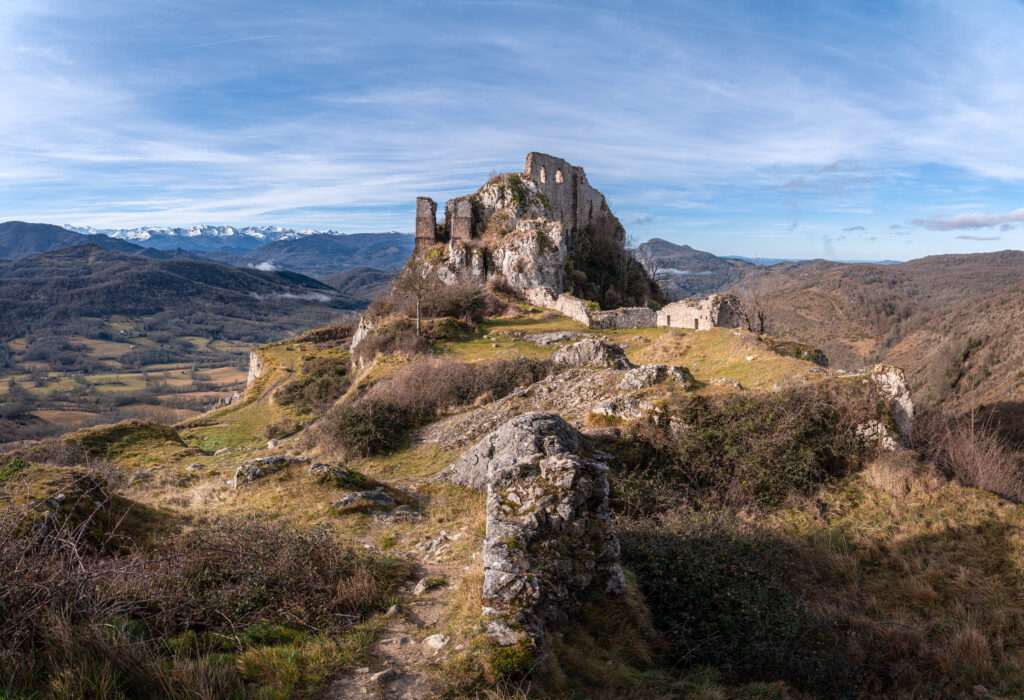
The Château de Roquefixade, perched proudly on its rocky outcrop opposite Montségur, is almost invisible from the road on a grey day. First mentioned in texts in the 11th century, the fortress was later controlled by Cathar lords who, during the crusade against the Albigensians, fought alongside the Counts of Toulouse and Foix. After this tragic episode, Roquefixade was bought by the King of France, Philippe le Hardi, who decided to build a royal fortress there. The castle was eventually destroyed by the people of Roquefixade on the orders of Louis XIII. We recommend that you visit Château de Roquefixade at suns et. The village church, recently restored, is also worth a visit and shines with a thousand lights.
13. Château de Villerouge-Termenès
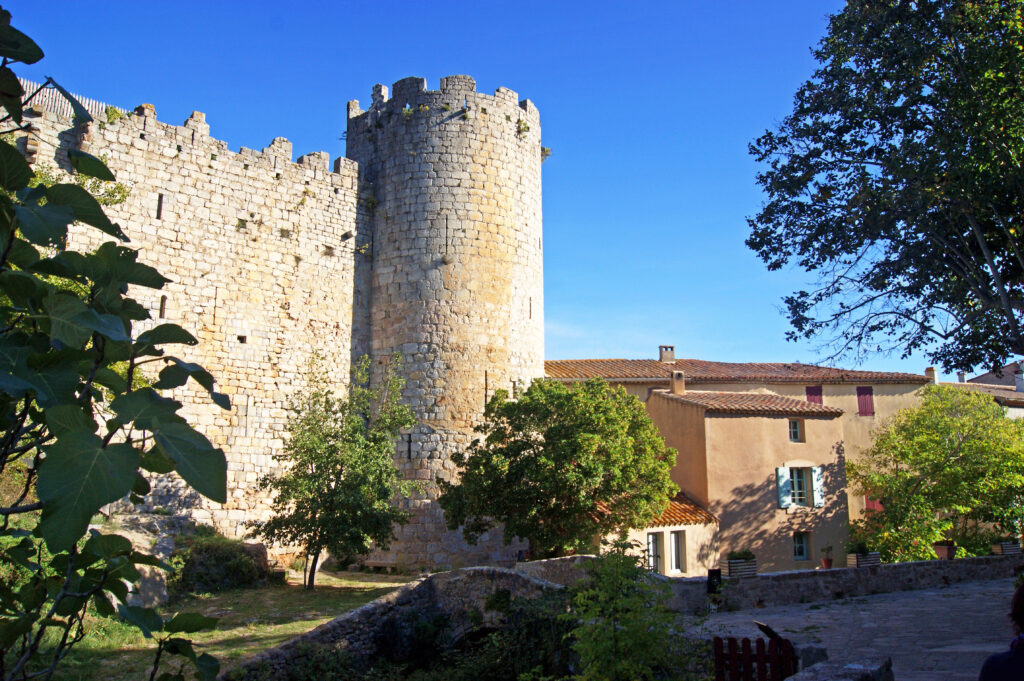
The Château de Villerouge-Termenès is an impressive example of medieval military architecture in the Corbières, with a well-preserved quadrangular enclosure and keep. The castle's east wing is accessible for a three-level audiovisual guided tour, where you can learn more about the history of Catharism and the power of the Archbishop of Narbonne, Bernard de Farges. The final chapter of the Cathar tragedy took place at Château de Villerouge-Termenès, the residence of the archbishops of Narbonne. Guilhem Bélibaste, the last Cathar, spent his final hours there before being burned alive in 1321. Thanks to audio documents, guides, videos, slide shows and models, visitors are transported seven centuries back in time.
14. The city of Carcassonne
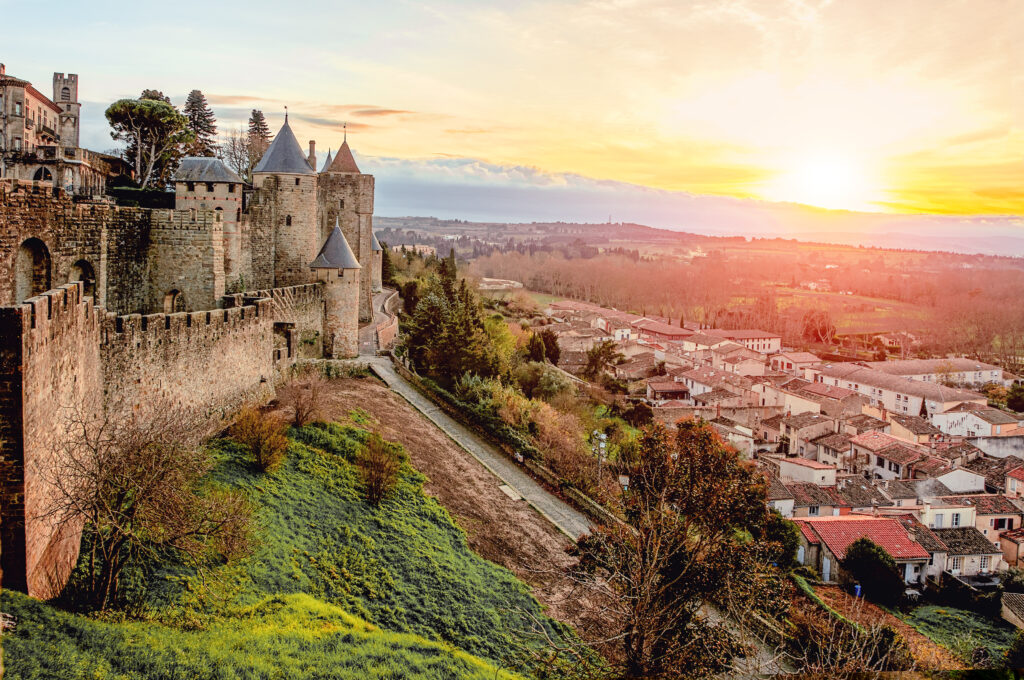
A medieval city, Carcassonne was once a royal stronghold and a major center of textile production, and enjoyed a turbulent past, particularly during the battles between the royal forces of France and the Cathars. Today, it is one of France's most beautiful medieval villages. The Pont-Vieux and the Bastide Saint-Louis, the Château Comtal and the Basilique Saint-Nazaire are just some of the many monuments to see as you wander through the streets. There are also some very interesting museums, such as the Inquisition Museum, the School Museum, the Maison de la Chevalerie and the Mémoire Combattante cultural center.
15. Château de Foix, one of the finest Cathar castles to visit in Occitanie
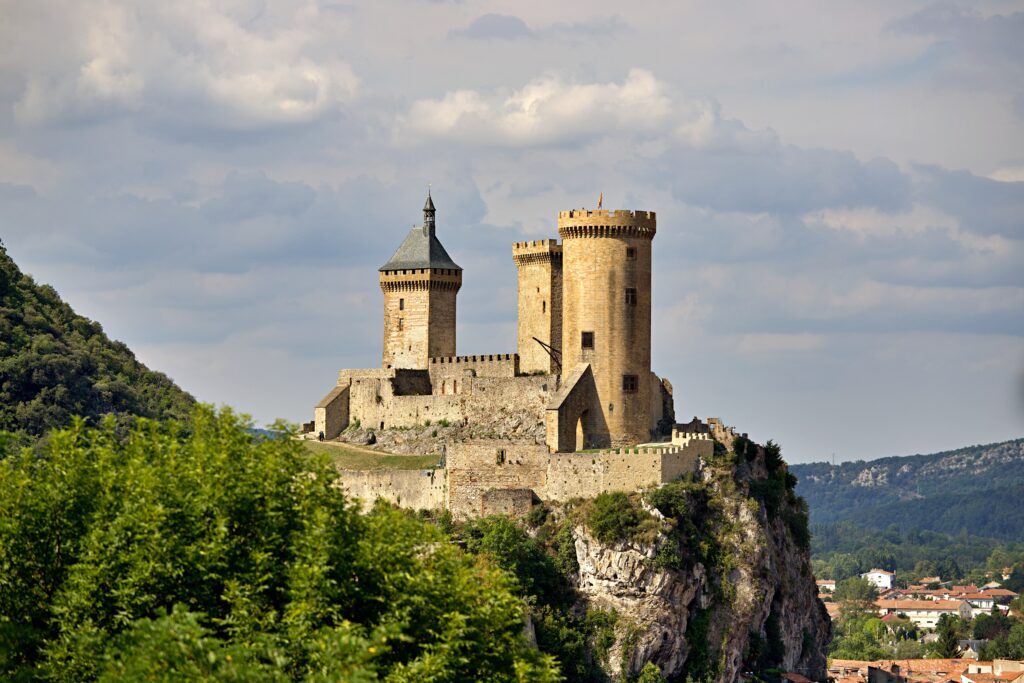
Suspended like an eagle's nest at the confluence of the Ariège and Arget rivers, Château de Foix stands out from the mountainous foothills and seems to hang in the clouds rather than rest on solid ground. Its strategic position has given rise to much jealousy and formidable sieges. The three towers that stand out with authority against the Foix sky belong to different eras and bear witness to the ancient power of the Counts of Foix. This monument defies the centuries and is a symbol of the region's history. Don't miss the large interactive museum, which offers a total immersion in time and history, combining heritage and new technologies.
Interested in our article? Check out our Top 10 most beautiful castles in Europe.


